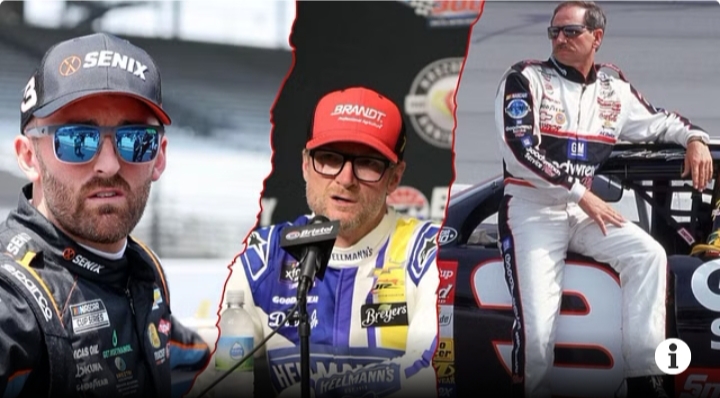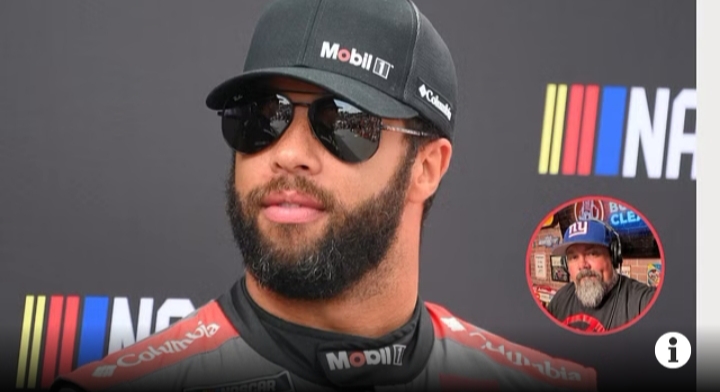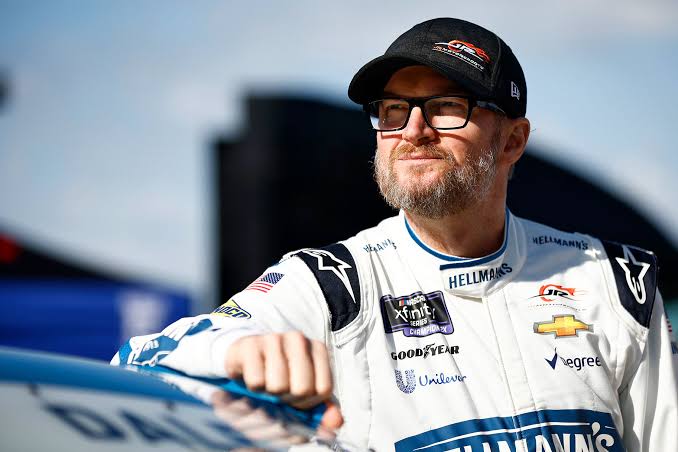Dale Earnhardt Jr. recently shared his thoughts on the striking similarities between Austin Dillon’s last-lap crash at Richmond Raceway and the racing style of his iconic father, Dale Earnhardt. In a conversation with his podcast co-hosts, the 49-year-old reflected on how his father’s time in racing was “certainly different,” highlighting the more relaxed regulations of that era compared to today’s stricter rules.
Dillon celebrated his first victory in the 2024 Cup Series, securing a spot in the playoffs. However, his triumph came after he collided with Joey Logano and Denny Hamlin in the final turn.
As Dillon basked in the glory of his win, fans quickly drew parallels between his aggressive maneuver and the legendary tactics of Dale Earnhardt Sr., who was famous for his tough racing approach. Even seven-time Cup Series champion Jimmie Johnson joined the conversation, tweeting about the ‘Dale Sr vibes’ surrounding Dillon’s performance.
Dale Earnhardt Jr. elaborated on the connections between his father’s racing style and Dillon’s actions during a segment on Dirty Mo Media on X.
Dale Earnhardt Jr. took a moment to reflect on the fierce and aggressive racing style of his father, Dale Earnhardt Sr., during the thrilling seasons of 1986 and 1987. These years were pivotal for Earnhardt Sr., as he clinched his second and third Cup Series championships, solidifying his legacy in the sport. Dale Jr. vividly recalled the intensity of those races, particularly the way his father drove the iconic blue and yellow car, which became synonymous with his relentless pursuit of victory. He noted that the racing environment back then was markedly different from today, characterized by a level of physicality and competitiveness that often led to dramatic moments on the track.
One memory that stood out for Dale Jr. was the sheer chaos of the final laps, where the stakes were incredibly high. He couldn’t recall a specific instance when his father had cleared out two competitors in the final corner, but he knew it was a common occurrence in that era of racing. The atmosphere in the grandstands during those races was nothing short of electric, with fans passionately expressing their emotions. Cheers erupted for the victor, while boos rained down for those who fell victim to Earnhardt’s aggressive tactics, particularly during a memorable showdown against Labonte’s #5 Chevy. The tension and excitement of those moments were palpable, as the crowd reacted to the daring moves that defined the sport at that time.
In a more contemporary context, Austin Dillon shared his own experience on the track, specifically regarding a collision with Dale Earnhardt Jr. that had garnered attention after the release of SMT (Scoring and Timing) data. This data provided a detailed analysis of the final-lap actions leading up to the incident. According to insights shared by NASCAR pit crew member Bozi Tatarevic, Dillon’s #3 Chevy made a sharp left turn of +33.9 degrees just before crashing into Denny Hamlin. This revelation sparked discussions among fans and analysts alike, as they dissected the implications of the data and the decisions made in those critical moments of the race. Dillon’s account added another layer to the ongoing narrative of racing dynamics, showcasing how technology is now playing a significant role in understanding the complexities of the sport.
The Richmond race victor, Austin Dillon, took the opportunity to share his thoughts and experiences with Dale Earnhardt Jr. regarding the crash he experienced during the race on Sunday, as well as the accompanying SMT (Scoring and Timing) data that provides insights into the incident.
During a segment on Dirty Mo Media on YouTube, Dillon described the moment leading up to the crash, saying, “I find myself in the second lane, right in the middle, as I angle the car to head back down the hill. Exiting Turn 4 at Richmond, the track naturally pushes you toward the wall when you’re hugging the yellow line. Denny’s on the lower line, and I’ve got a solid Diamond-like angle at this moment” (1:33). His detailed account highlights the complexities of racing dynamics and the split-second decisions drivers must make in high-pressure situations.
Dillon elaborated on his perspective during the race, noting, “My view is still clear, and I’m focused on the start/finish line. However, my most direct path to that line is about mid-track, which isn’t ideal for the driver coming up the track.” This statement underscores the challenges drivers face when navigating tight spaces on the track, especially when other competitors are vying for position.
As a result of his performance at Richmond, Austin Dillon currently finds himself in 26th place in the regular Cup Series standings. This victory is particularly significant for the 34-year-old driver, as it marks his first Top-10 finish since the Enjoy Illinois 300, indicating a potential turning point in his season and a boost in momentum as he looks to improve his standing in the championship race.




